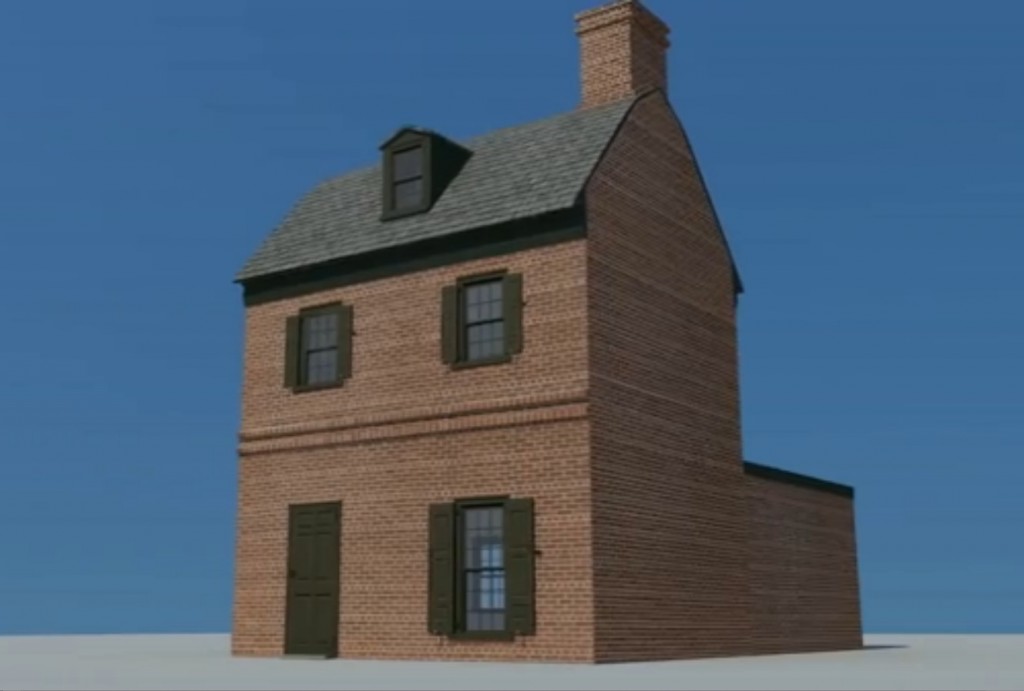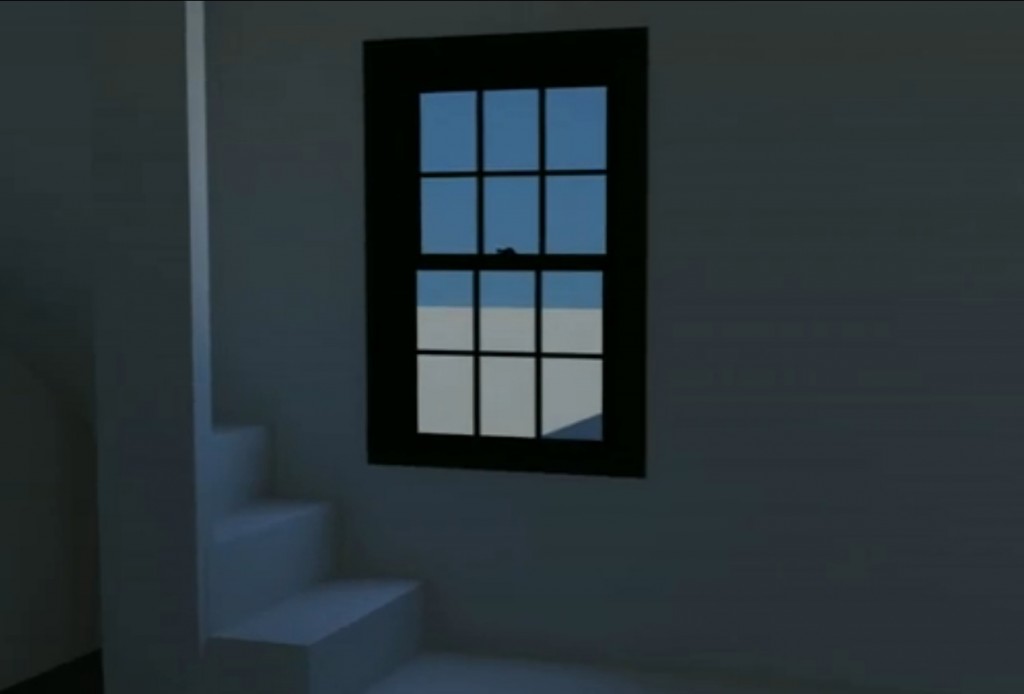June 2013 — Artifact of the Month
Award Winning, 3D model of the James Dexter House Archaeological Site

This month’s featured ‘archaeological specimen’ is a newly created artifact — a digital 3D model that helps to interpret the archaeological past in the present. The new technology uses archaeological evidence from Independence National Historical Park to explain the James Dexter House archaeological site.
Excavated in 2003, the James Dexter House site is now occupied by the National Constitutional Center bus depot. But thanks Jason Kirk, of Drexel University’s Westphal Media Arts and Design College, this piece of Philadelphia’s and the nation’s social and historical landscape is being brought back to life via digital 3D modeling.
Kirk produced a digital 3D conjectural model of the Dexter House during the summer of 2012, while studying with Drexel University Associate Professor, Dr. Glen Muschio. In making the model, Kirk consulted with Cultural Resource specialists at Independence Park (namely Chief of the History Branch –archeologist Jed Levin, and Chief Curator Karie Diethorn) as well as with the contracted archaeological site supervisor of the Dexter excavation, Douglas Mooney. The model is interactive which means that viewers can navigate around and through the house ‘remotely’ visiting the past and walking where Dexter and his family walked.

Kirk premiered his Dexter House digital 3D model at Drexel University’s Research Day in May, 2013. His research poster was 1 of 500 student entries. The model earned him top university honors including a University Award for Creative Arts and Design and a Westpahl Media Arts and Design College Merit Award.
A 39-second movie demonstrating the Dexter House digital 3D model in action can be viewed here. Kirk’s interactive model can be accessed as well. (NOTE: operating the interactive file requires a quick and easy plug in for a UNITY Player).
James Dexter was a resident of early Philadelphia. Born into slavery, Dexter ultimately bought his freedom, as well as the freedom of his wife. In the 1790’s, Dexter was working as a coachman and living with his family near the corner of today’s 6th and Arch Streets. He was also active in Philadelphia’s free African community.
Not a lot is known about James Dexter or, for that matter, about the free African life experience in early America. Historical Archaeology research however is beginning to contribute important insights. Excavation of the James Dexter House site was undertaken at the behest of African American religious leaders in the Philadelphia area. Historical documents indicate that important meetings relating to the establishment of the earliest black churches were held in James Dexter’s house. These founding meetings were attended by, among others, Absalom Jones. The Dexter House excavation formed a case study for the National Park Service’s community engagement policy.
The digital 3D model Kirk produced is based on the archaeological footprint of the house discovered during excavation and on an historical insurance policy description for the house found in the Pennsylvania Historical Society. The model depicts the exterior and interior of Dexter’s house including a probable hearth/chimney location and stairway location.
Future plans for the Dexter House digital 3D model include creating an interactive virtual environment for discussing race, class and religion in post revolutionary Philadelphia.
Text and graphics for this month’s artifact are provided courtesy of Drexel University Digital Media undergraduate student Jason Kirk, Dr. Glen Muschio, and Masters student Daniel Newman.
Go to the Artifact of the Month Index…
by admin